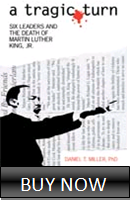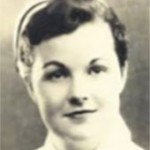
Now And Today, October 5, 2020
The speed is incomprehensible. From nowhere, the virus appears in one, then five, then twenty. In a small space, person to person, contact to contact, the virus spreads in a matter of minutes and shows signs in a matter of hours. One day you see someone you know, the next day you see them behind glass, mask on, isolated and removed. Then they start, the reports and speculations of condition, of medical status, of an alarming slide or a hopeful improvement.
If coronavirus could be said to have a belief, speed is it. Speed is fundamental to the illness, carrying the threat of suffering and death as fast as possible and far ahead of our abilities to prevent, avoid, or subdue the condition. Speed exploits travel and transport; the act of going from place to place is just the first step in a blazingly rapid expansion after arrival. Full contact isn’t necessary with speed’s eagerness to take over after the slightest contact. Speed intimidates and frightens in many forms, ranging from personal transmission in all cases to personal decline in some cases.
Speed shows up when the illness shows up, even in Rose Gardens.
* * * * *
Then, October 5, 1918
It only took a week.
In a week since Liberty Loan events occurred in hundreds of American communities, influenza leaped and jumped and flew across whole cities and towns. Seven days ago people were happy. Seven days later, today, people are afraid to go out of their homes. The air they breathe, the surface they touch, any of it could be the touch point from which the sickness enters and begins its rapid spread inside the body.
More than 400 new cases appear each day, including today, at military camps around the United States. Over 100 die each day, including today, at those same places.
Chicago’s superintendent of police orders all members of the police department to spread out across the city and enter every public place. They’re looking for violators of rules not to spit and not to cough or sneeze without a mask or handkerchief. The police are urged to be kind, reminded that everyone wants to do the right thing and in that spirit should be approached about compliance.
The people of Memphis, Tennessee will see reduced public transportation. They’ll also cope with slower telephone calls. They’ll have to know that factories won’t be working at full capacity, including on products and items that are supposed to be vital for the war effort underway in Europe. On all three counts the loss of optimal service reflects the rate of illness among workers in this city along the Mississippi River. That’s how it is today, suddenly.
Practically everywhere in eastern Pennsylvania influenza is far worse than it was a few days ago. The Liberty Loan parade in Philadelphia had attracted more than 200,000 people. They enjoyed themselves, went back home, and carried influenza with them. By today the “numbers of deaths from influenza are the worst ever reached in a single day in the city,” according to reports in one newspaper. Person to person, place to place, speed all the way.
* * * * * *
Looking Ahead From Today, October 5, 2020
A lot broke loose over the last week. We saw the pandemic in microcosm, shown for effect. A small set of people in a small amount of space became the latest victims of coronavirus.
I’m referring to events within the American Presidency and surrounding circles. Though both events pertain to World War Trump, we’re not sure of the exact originating locations or groups—they could be in the White House Rose Garden at the announcement of Amy Coney Barrett as nominee for the Supreme Court or at Bedminster, New Jersey and a private fundraising event held for POTUS 45. Fortunately and thankfully, as of this writing the severity is limited. Thank goodness, too, that the toll of Warcorona is so much less than that of Warfluenza 102 years ago.
Still, there was shock. The shock was the President’s involvement, of course, but the shock was also the speed, as always. Whatever the circumstances, it was a small set of people, a small amount of space, and rocket-like spread of positive tests for coronavirus. The speed was the thing. We were reminded of the speed with every cable-news crawler, breaking-news update, and smartphone ping of a new-news alert.
For ordinary Americans no such array of notifications lights up or buzzes. When it happens to people who aren’t famous or well-known, word of the speed arrives privately with a text message, a phone call, an email or, less often, an actual visit. For ordinary Americans today is another day of reliance and connection with each other. Together, they hold on as the speed rushes on.
* * * * *
For Those Wanting To Bridge 2020 And 1918, A Reminder…
Warfluenza and Warcorona.
Warfluenza is what Americans experienced in 1918 when influenza interacted with their dominant issue and concern of the day, World War One. The illness comes to them through their handling of and coping with World War One. That’s why I want you to think of it as Warfluenza. The pandemic and the issue affect each other.
Warcorona is what Amercians are experienced in 2020 when coronavirus interacts with our dominant issue and concern of the day, World War Trump. Regardless of whether you love or hate Trump, Trumpism, and the Trump Presidency, it blends with the illness and thus we handle and cope with both together, inseparable. It’s Warfluenza updated to our world—Warcorona.
I want to reintroduce you to the world of Warfluenza’s Wave Two because we’re in Warcorona’s Wave Two right now with preschool-to-grad school education. If you have someone somewhere in that track, you’re in Wave Two. And so we’re following Warfluenza and Warcorona on exactly the same days across 102 years. Mark Twain is supposed to have said that history doesn’t repeat but it sure does rhyme. Count me as a “yes” to that statement.
As always, I invite you to reach out to me. Leave a comment here, email at , or text at 317-407-3687.







